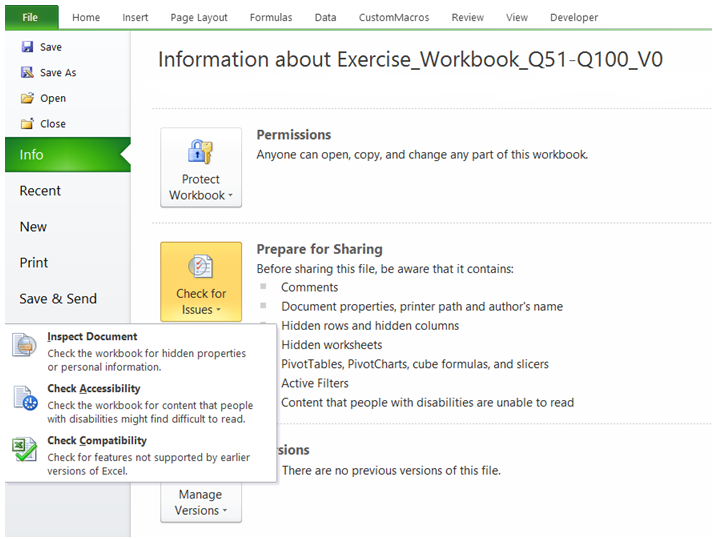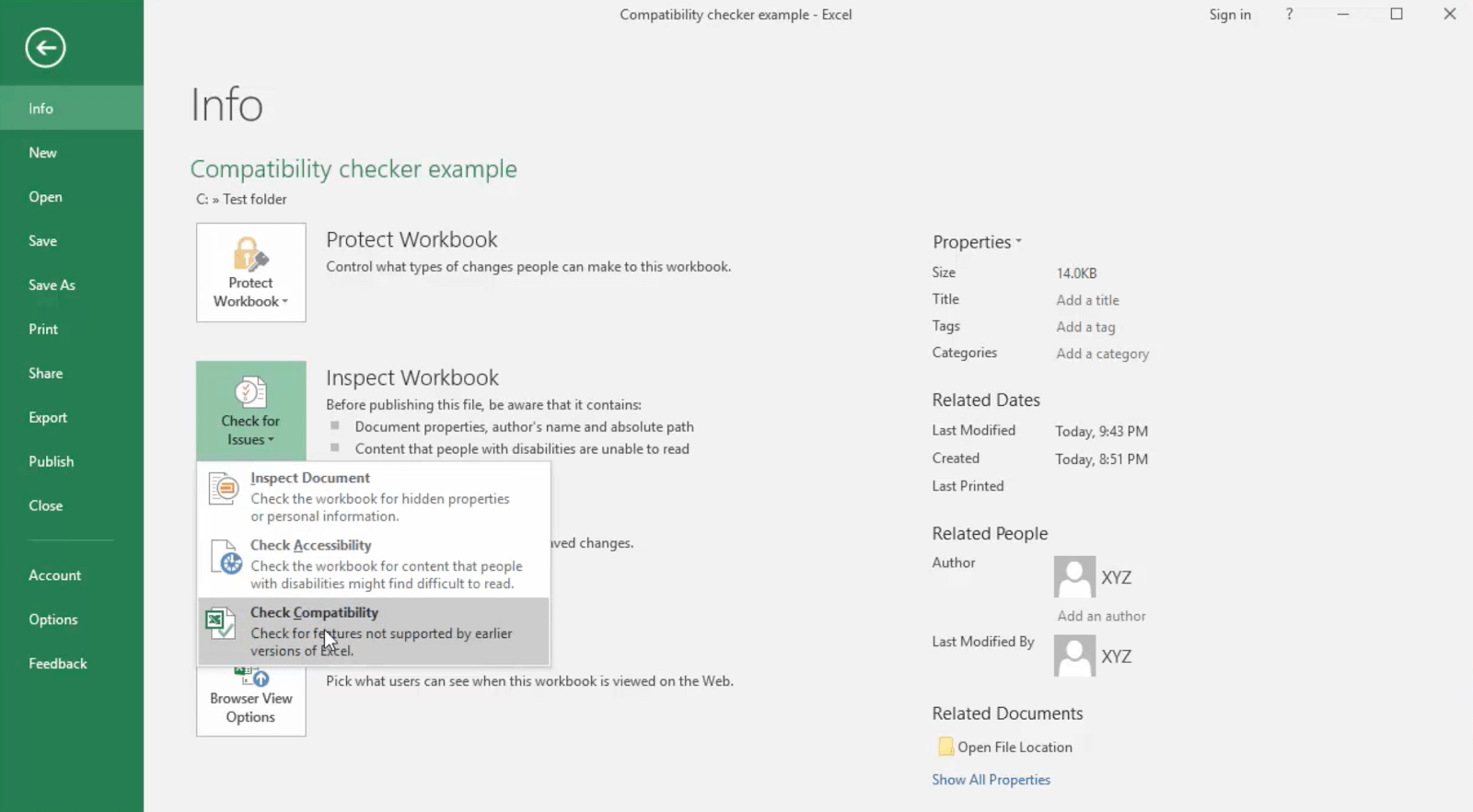

For each case, copy the source data to a new range of cells on the worksheet containing the formatted cells and then update the conditional formatting rule to use the new range. What to do Click Find in the Compatibility Checker dialog box to locate each instance of this issue. These rules are not supported in earlier versions, and will be lost if you save the file in the Excel 97-2003 file format. What it means Beginning in Excel 2007, conditional formatting rules can refer to values on other worksheets. These conditional formats won't be saved. Some cells in this workbook contain conditional formatting, which refers to values on other worksheets. Issues that cause a minor loss of fidelity Issues that cause a significant loss of functionality Issues that cause a minor loss of fidelity might or might not have to be resolved before you continue saving the workbook-data or functionality is not lost, but the workbook might not look or work exactly the same way when you open it in an earlier version of Microsoft Excel. Go to TechNet Office Resource Kit for details.Important: Before you continue saving the workbook to an earlier file format, you should address issues that cause a significant loss of functionality so that you can prevent permanent loss of data or incorrect functionality. This tool is called OMPM (now superseded by Office Telemetry). But for corporate repositories, you need a heavy duty bulk conversion tool.

Users can convert files to new format one by one – as and when they open old files. This is done by going to File – Edit Links – Select the linked file – Change Source – Choose the new format file. If you find files which are linked to the current file, you must change the linkages. You will have to rely on your (or your team’s memory) for this. So there is no technically sure way of finding out linkages. Unfortunately if another file is linked to the current file, the linkage information is in the linked file. That is why you have to check if the file you are about to convert is linked to any other file. This can lead to dangerous situation of you viewing outdated data in the linked file. Therefore, if this file is being used by another file in a link, that link will still point to the older version file. But it has one disadvantage – it changes the file name. Just right click on the older file entry in the Recent Files list and choose RemoveĬhanging the file to new version is definitely a good decision. But keeping both (old and new) files visible there is undesirable.ĭon’t worry – even this problem has been thought of by Office team. The list of recently opened files gets flushed out as and when more files are opened. Worse still, you may edit both files at different points of time and then get completely confused in life. While opening the file, you may open the older file and edit it without realizing it. Now in your File Open list, both files are seen – which is very dangerous. What did you just do? You opened an XLS file, Saved it as XLSX and reopened it. Just before sending it to the customer, save it as a copy in old format. While you are working on the file, use it in new format. But that does not mean you should not get benefits of the new version you already have. My customers are demanding old version filesĪbsolutely genuine problem. In case of Excel, one more step is required. If the file has macros, it must be saved with the M extension like XLSM, DOCM, PPTMįor Word and Excel, the Compatibility Mode goes away as soon as you save the file in the new format. Old formats are (XLS, DOC, PPT), new formats end with X like XLSX, DOCX, PPTX. Think a little and confirm that the file is safe to convert. Even if file extension is not shown, compatibility mode will be shown for older files.

As soon as you open a file – check if it is showing compatibility mode. You or your company spent money to buy the latest version… but you are not going to get any returns from that investment Solution is simple Step 1: Notice the Compatibility Mode problem Like this, hundreds of new features will either be disabled or work partially in compatibility mode. For example, even if you have Excel 2013, you will get only 65000 rows, not 1 million rows. In short, you are not going to get most of the new features of the new version. Therefore, Office is downgrading itself and behaving as though it was Office 2003! You are using a new version of Office but you have opened an older version file. My customers are demanding old version filesĭo you know the meaning of Compatibility Mode?.


 0 kommentar(er)
0 kommentar(er)
